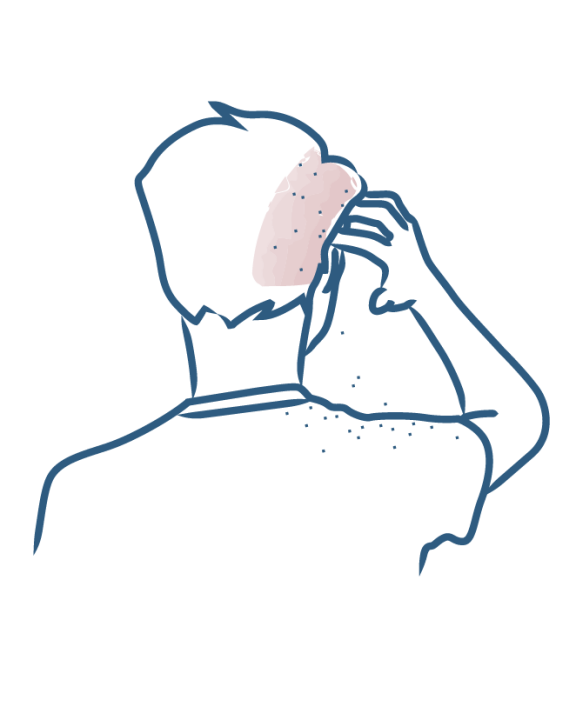-
Your concerns
Our articles to help you gain a better understanding
-
Our solutions
-
Ducray Dermatological laboratories
Our articles to help you gain a better understanding

Dandruff is a very common scalp condition with multiple causes and triggering factors. There are two types of dandruff: oily and dry.
Oily dandruff develops on a scalp where sebum is produced in excess.
Sebum is secreted by sebaceous glands. When produced in normal quantities, it ensures effective hydration of the skin and scalp and protects against external aggressions. In people suffering from oily dandruff, it is produced in excess, and allows the proliferation of yeasts naturally present on the surface of the scalp. These yeasts, of the genus Malassezia, can trigger inflammation and accelerate desquamation.
This is why, if you have oily dandruff, it is important that you manage the excess sebum, as it is one of the causes of dandruff.
There are many solutions that contain sebum-regulating or sebum-absorbent ingredients. These include green clay, used to act against oily dandruff.
Green clay is known for its cleansing and purifying properties. It acts by regulating the excess sebum present on the surface of the scalp and on the hair.
Green clay is of particular interest for people with dandruff because it also has anti-inflammatory properties, to soothe the itching and irritation.
Green clay can be used as a mask in addition to a treatment to fight dandruff. Clay acts by absorbing excess sebum and oil. Apply the mask to the entire scalp, leave on for the indicated time and then rinse thoroughly with a mild shampoo.
Green clay can sometimes irritate or dehydrate the skin, so it is essential that you take good care of your scalp when using clay-based products and that you do not use these masks too often.
Before starting a treatment, ask your pharmacist for advice, they can tell you what to do to fight dandruff.
Loose dandruff conditions, DS, pso

Dry / oily loose dandruff

Dry / oily loose dandruff
NEWSLETTER
Dermatological expertise
To better understand your skin and hair, discover our exclusive content and innovative care products designed to improve your quality of life..